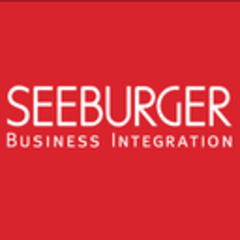What is our primary use case?
We are using it mainly for EDI with a wide variety of trading partners. We do a lot of EDI transactions with a lot of our customers and vendors, as well as a few healthcare providers.
We have a lot of transactions, but we don't really have that big of a load. On a daily basis, we have around 2,000 transactions.
How has it helped my organization?
The EDI implementation that we used before took a while for us. Now we are able to do it pretty quickly. For the tool that we used to have, we had specially trained developers who used to do all the development of EDI maps and the configuration. But with SEEBURGER Business Integration Suite (BIS) now, we were able to train our EDI analysts, and because the tool has very simple, intuitive mapping capabilities, even our EDI analysts are able to develop all the EDI maps, do all the configurations, and do all the setups for any of the trading partners.
All in all, it has simplified our EDI implementation. It takes less time now.
In terms of adding integrations, whenever we have to, for example, add any new EDI trading partner, we are able to use existing maps that we have for other trading partners. It's like making a copy and creating a new map from that existing map and doing very minor changes here and there.
Also, when it comes to reaction time, when we started using this tool, initially, of course, we did not really have any people who were trained or had any experience on the tool. It was pretty new for us. Overall, the implementation time, the time it takes people to build new maps, has more to do with experience. But we have been able to reduce, by at least one-third, the time it takes, compared to what it used to take.
What is most valuable?
In general, I think the EDI tools that SEEBURGER Business Integration Suite (BIS) has are pretty robust, pretty easy to use.
What needs improvement?
One thing that comes to mind is the service-oriented architecture. I have seen, in some of the other middleware tools, that you can create one service and then reuse it, without creating a copy. As I mentioned earlier, we create a copy of an existing map. In some of the other tools out there in the market, you can create one service and use that service without creating a copy. That kind of capability currently doesn't exist in this solution.
Also, these days, a lot of these companies are providing their solutions on the cloud. I think SEEBURGER has some presence there, but we're not really using it. For the future, they may have to provide more of a cloud-based solution.
For how long have I used the solution?
More than five years.
What do I think about the stability of the solution?
The solution is pretty stable compared to what we used to have. We used to have a lot of memory-related issues, and we would have to restart the application multiple times. But SEEBURGER Business Integration Suite (BIS) is pretty stable.
There are regular production support issues, but other than those system-related issues, we don't really have that many.
What do I think about the scalability of the solution?
Scalability-wise, I think there is still some scope but, overall, it's pretty scalable.
How are customer service and technical support?
Tech support is pretty good. We have a Premium Support package, so they respond pretty quickly to us. They have offices in Germany and the US and they answer depending on who is available. They're pretty responsive and knowledgeable too.
Which solution did I use previously and why did I switch?
We used to have a different solution. At the time that we bought this tool, we had also acquired another company. That company used to use a different tool. And for us, we were just using AS/400. We were trying to go to a better system that had more EDI capabilities. With the AS/400 we did not have a lot of capabilities that we were looking for in an EDI tool.
SEEBURGER Business Integration Suite (BIS) fit very well with what we were looking for in the solution that we wanted to have in our company.
How was the initial setup?
We utilized the Professional Services of SEEBURGER. They came and did all the installation for us. We had some of the solution architects from our company design what the system landscape should look like but, all in all, it was SEEBURGER that did the installation of the product.
When we bought SEEBURGER, at the same time we acquired another company. So it was like an SAP implementation we were trying to do and, on top of that, we acquired that other company. For us the project went pretty long because of all the complexities and all these other developments. It took us around a year or so until we first put something into production.
In terms of the implementation strategy, we just had the SEEBURGER consultants initially do some training for us. They did all the installation, and after we got the training, we did all the development and the implementation of the solution, as such.
What was our ROI?
As I said above, the tool that we used to have required those developers. We don't have those developers anymore, so we are saving that money. We have the same number of EDI analysts and they are able to do all the mapping. Because of the ease of use of the tool and the capabilities that the tool provides, we reduced the human resources that we used to need to support the previous tools. That's some money we are saving every year.
In terms of licensing also, it's cheaper than what we used to have. And, of course, the number of EDI partners that we are implementing is also a savings for us, moving any manual customers to EDI.
What's my experience with pricing, setup cost, and licensing?
Pricing, compared to the tool that we had earlier, is cheaper.
The way they have their licensing structure set up, they have a lot of different modules. For us, we did not really know if we were licensed for certain things or not. We had to reach out to them multiple times to tell them that we were looking for this or that capability. We had to buy licenses for different things at different points in time, not knowing that we could have it bundled initially.
Which other solutions did I evaluate?
We did evaluate webMethods vs SEEBURGER Business Integration Suite (BIS). And because we were doing an SAP implementation and SAP had its own middleware tool, we evaluated SAP Process Integration. There were a couple of others. But overall, in terms of the EDI capabilities specifically, because we were mainly looking for the EDI, SEEBURGER Business Integration Suite (BIS) stood out.
What other advice do I have?
Training, of course, is really important. Get trained on the tool. If we could have used some of the consulting from SEEBURGER for the initial implementation, we could have learned best practices. Because now, when we go back and look at some of the EDI maps that we developed, now that we are experienced, we say, "Okay, we could have done it in a different way or in a better way." If you get that help in the very beginning, then you can avoid all that, and do a better design of the overall solution.
In terms of the users, it's basically an IT-supported application. We don't really have any direct business users. We have six or seven IT people who support the system. We have a team of four EDI analysts who mainly do all the EDI implementations and regular day-to-day support. We have an admin team, but we hardly use them. It's only during any restarts or any maintenance that we have to use them. On a day-to-day basis, we have a team of four people who actually provide support on the system.
Regarding extent of its use, as I mentioned earlier, we are using it mainly for EDI. We also do have some other tools in our company that we are currently using for application-to-application and business-to-business integration. SEEBURGER Business Integration Suite (BIS) is mainly for EDI-related stuff.
In terms of usage, on a yearly basis, we have an objective where we try to increase the usage of EDI in our company. We reach out to our trading partners and a lot of our customers who are currently not sending documents through EDI. If they are sending orders, or we send invoices to them through, for example, email or fax or another manual method, we reach out to them and ask them if they have the capability so that we can onboard them into EDI. With that campaign, every year we are increasing the usage of SEEBURGER Business Integration Suite (BIS) by at least some 15 to 20 customers.
We have the on-premise solution. We have not used the Landscape Manager feature.
I would rate the solution at eight out of ten. As I mentioned, we are only using it for EDI. In terms of enterprise application integration, because we already had another tool, we don't even use that; I don't know where SEEBURGER Business Integration Suite (BIS) stands in that. But in terms of EDI, it is a pretty good tool. If I were to just rate it for EDI, I would rate it a ten but, overall, because some of the capabilities that other tools provide, I give it an eight.
Disclosure: PeerSpot contacted the reviewer to collect the review and to validate authenticity. The reviewer was referred by the vendor, but the review is not subject to editing or approval by the vendor.













